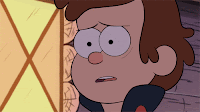Hey, here we are. Exactly halfway through NaNoWriMo. How are things going? Hopefully you’re about halfway through your goals. Don’t freak out if you’re not. There’s still plenty of time to get caught up. You’re going to nail this.
Anyway, I had an interesting back-and-forth with my editor last month, and I thought it would be worth sharing with you.
I’ve talked a bit in the past about dialogue descriptors. They’re one of those things that can be a bit tricky at first. I don’t want to use too many different descriptors, to the point that I’m distracting from what’s actually being said. I also don’t want to fall into a habit of using too many proper names, but… I don’t want to overuse pronouns to the point of being confusing. And really, if I can trim away excess descriptors altogether, that can really pick up the pace. Unless they’re there deliberately for pacing reasons.
Not confusing at all so far, right?
So here’s a wild theory of mine I’d like you to consider.
And it’s a bit rambly. Sorry.
I think, on an instinctive level, we tend to view—or hear, I guess—dialogue as a binary thing. A back and forth between two people. Wakko speaks to Dot, Dot replies to Wakko, Wakko replies to Dot, and so on.
Because this is such a normal and natural thing for us, it’s how we interpret most conversations. If I show you a page of nothing but dialogue, the automatic assumption is going to be that it’s between two people. A to B to A to B. It’s just how things tend to line up in our minds.
This gives us a lot of stuff to play with as writers. If Wakko speaks to Dot, the inherent understanding is that Dot’s reply is going to be to Wakko. Which means we don’t need to point out she’s talking to him. Sure, I might need something if there are five people in the conversation, but when it’s just one on one dialogue, constantly pointing out who’s talking and who they’re talking to this can be… excessive. I mean, who else could Dot be talking to? Does she think out loud a lot?
Likewise, I don’t need to explain that Wakko’s responding to Dot. I probably don’t even need to say who’s responding. Again, my reader’s already thinking in a binary mode, so they’ll figure it out on their own. They’ll probably be glad I’m not spoon-feeding it to them, to be honest. Again, A-B-A-B-A-B… this isn’t tough for a reader to understand. I don’t need to label each element of it.
Now here’s something to keep in mind.
 Have you ever had to do something that’s very repetitive? Maybe something at work, maybe something for fun. Stapling forms, ping-pong, folding laundry, even just one of those toys where you hit the rubber ball with a paddle? Anything where it’s just one-two -done, one-two -done, one-two-done, and so on?
Have you ever had to do something that’s very repetitive? Maybe something at work, maybe something for fun. Stapling forms, ping-pong, folding laundry, even just one of those toys where you hit the rubber ball with a paddle? Anything where it’s just one-two -done, one-two -done, one-two-done, and so on?
Personally, I’ve found that the real killer in these situations is stopping to think about what I’m doing. The moment I consider howI’m whacking that rubber ball again and again and again is the moment I lose my rhythm. It’s when I stumble and mess up and have to go back to square one.
I think the same holds for dialogue. I can keep that back and forth and back and forth going for pages if my rhythm’s good. It’ll be fast and smooth and just amazing.
But…
The moment I give the reader a reason to think about that back and forth of dialogue—any reason—is the moment they’re going to stumble. And when they stumble, they’re going to stop and have to backtrack. I’ve knocked them out of the story, and now they’ve gone from reading and enjoying it to… examining and measuring it.
So during these long stretches of back and forth dialogue, it’s not a bad thing to remind the reader who’s speaking at points. Especially if there might be something going on with my actionor my structure that might make them question who’s speaking. Again, I don’t want to risk a stumble.
Now, going off something I brushed up against above…
I think things get chaotic in dialogue when there are multiple speakers and the writer isn’t clear about it. If I suddenly introduce Phoebe into the conversation between Wakko and Dot, this isn’t A-B-A-B anymore. There’s a random C in there somewhere. And if I don’t make it clear where it is, it’s going to make my reader stumble and break the flow. Again, I want people reading my story, not analyzing it.
So introducing that third element into the conversation is a great place for dialogue descriptors. In fact… I might go so far as to say it’s almost a necessary place for them. I want to be very clear if it’s A, B, or C talking.
 Y’see, Timmy, we’re always going to keep defaulting back to that instinctive. binary, back-and-forth view of dialogue,. A-B-A-B. Unless I’m told otherwise, I’m going to assume the person speaking afterPhoebe is the person who spoke before Phoebe. So once I’ve got three or four people in the mix, I need to be a lot more careful with where I do (and don’t!) use dialogue descriptors. I don’t want my writing to get bogged down with them, but I need to be sure it’s always clear who’s speaking.
Y’see, Timmy, we’re always going to keep defaulting back to that instinctive. binary, back-and-forth view of dialogue,. A-B-A-B. Unless I’m told otherwise, I’m going to assume the person speaking afterPhoebe is the person who spoke before Phoebe. So once I’ve got three or four people in the mix, I need to be a lot more careful with where I do (and don’t!) use dialogue descriptors. I don’t want my writing to get bogged down with them, but I need to be sure it’s always clear who’s speaking.
Because I don’t want my dialogue to be C-A-C-A.
Get it? Poop joke.
Hey, next week is Thanksgiving. Which means no post on Thursday and, well… if you’ve been reading this blog for a while, you know what I’m going to talk about on Black Friday.
But maybe I’ll do something unrelated and semi-interesting on Monday or Tuesday.
Until then… go write.












